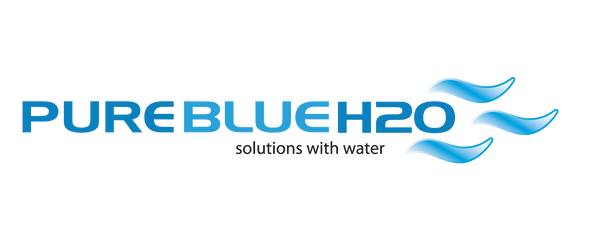How Do You Purify Water?
A big question homeowners ask is “How do you purify water for my home?”. The answer is a reverse osmosis system. Reverse osmosis (RO filtration systems) is the most economical method of removing 90% to 99% of all contaminants. RO membranes have a tighter pore structure than UF membranes. RO membranes can reject virtually all organisms, bacteria, and particles. Reverse osmosis is actually used by many water bottling companies. Natural osmosis happens when two solutions of different concentrations are separated using a semi-permeable membrane. The membrane is driven by osmotic pressure, which causes water to flow through it. This dilutes the more concentrated solution and results in equilibrium.
Hydraulic pressure is applied to concentrated solutions in water purification systems to counteract the osmotic tension. The concentrated solution is used to drive pure water and it is collected downstream from the membrane. Because RO membranes are extremely restrictive, they produce slow flow rates. To produce sufficient volume, storage tanks are necessary.
RO also includes an ionic exclusion procedure. Only solvents are allowed to pass through semi-permeable RO membranes, but virtually all ions and dispersed molecules are retained (including sugars and salts). Semi-permeable membranes reject salts (ions). This is done by electrical phenomena. The higher the charge, the more rejection. The membrane rejects almost all strongly ionized polyvalent ions (up to 99%) but only 95% weakly ionized monovalent ions like sodium.
Reverse osmosis can remove many impurities from water, including turbidity and lead, as well as turbidity and asbestos. This process can also remove most VOCs heavier than 50 g and chlorinated pesticides. Combining activated Carbon filters and reverse osmosis can provide the best treatment for the widest range of contaminants and impurities.
So for those wondering “How do you purify water for my home?” a RO is the most cost-effective and efficient way to purify tap water. However, it is important that the system is designed properly for the water supply conditions and intended use. RO is the best pretreatment for reagent-grade water polishing systems.
Reverse osmosis is also an insurance policy that protects against radioactive plutonium and strontium from the water. This is an important way to make sure your family is getting the best water possible for their health if you live near a nuclear power station.
Water Purification Systems
Each purification technology can only remove a particular type of contaminant. Therefore, no one purification technology can remove all contaminants to the required levels for critical applications. Water purification systems that are well-designed use a variety of purification technologies to attain final water quality.
To maximize their specific removal abilities, each purification technology must be used in the right order. This schematic shows how a central laboratory water purification system is designed to produce water for critical purposes.
Pretreatment equipment is used to remove contaminants from the feed water. Pretreatment is used to remove contaminants from the feed water. This includes reverse osmosis systems (RO) systems, as well as equipment that purifies it. An example of pretreatment is a carbon prefilter (or tanks) for chlorine removal, particulate filters for sediment/silt/particulate removal, and softening agents to remove minerals that cause "hard" water.
Next is Reverse Osmosis. RO can remove 90 to 99 percent of all contaminants in water. Because it removes a wide range of contaminants, RO is the heart and soul of any water purification system.
The RO membrane's tight porosity limits the RO membrane's flow rate. A storage container is used to collect the water and distribute it to other uses, such as polishing machines.
Polishing systems remove residual contaminants from pretreated water. Polishing systems are designed to remove any residual impurities in water that has been pretreated with other methods (e.g. reverse osmosis, deionization). This system could quickly exhaust the water's potential and reduce its quality. The combination of purification technologies and proper pretreatment will result in water that is almost free from microbial, organic, or ionic contamination.
Shop Pure Blue H2O Products Today
Pure Blue H2O has been around for decades and can provide easy solutions to any water problems in your home. There are many products available, including 3 stage reverse osmosis filter system, 4 stage reverse osmosis filter system, RO filter replacement, countertop water filtration systems, and more. Our company is customer-driven and has a passion to save lives from water-borne illnesses. All water products are designed, engineered, assembled, and manufactured in our laboratories. They can be customized to meet your specific needs. If you have problems with your water filtration or if your water is not being cleaned properly, please contact us today!

